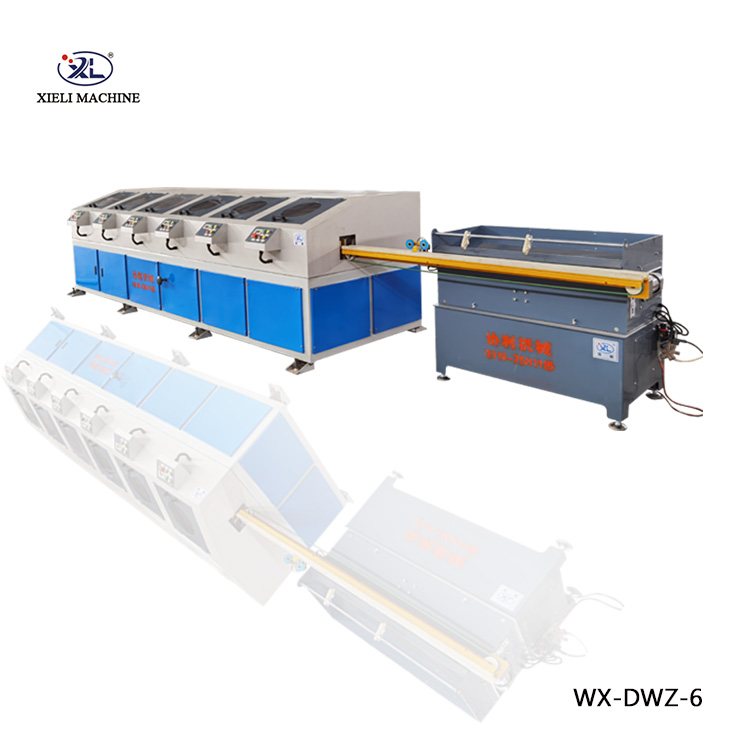Micro Centerless Grinder Service Ensuring Precision in Manufacturing
In the world of manufacturing, precision is key. Among the various tools that ensure high-quality production, the micro centerless grinder stands out for its ability to deliver precise dimensions and superior surface finishes. However, like any sophisticated machinery, micro centerless grinders require regular maintenance and service to ensure optimal performance. This article delves into the importance of micro centerless grinder service, the common issues faced, and best practices to maintain these essential machines.
The Importance of Micro Centerless Grinders
Micro centerless grinders are widely used in industries such as automotive, aerospace, and machining. They are designed to grind small parts to exact specifications, making them invaluable in creating components such as shafts, pins, and bearings. The unique design allows for the grinding of materials without the need for elaborate fixturing, which not only saves time but also enhances productivity. Therefore, ensuring that these grinders operate at peak efficiency is crucial for maintaining the quality and consistency of the final products.
Common Issues with Micro Centerless Grinders
Despite their efficiency, micro centerless grinders can encounter several issues over time. One of the most common problems is misalignment. As parts wear out or if the machine has not been properly calibrated, it can lead to inaccuracies in grinding, resulting in parts that do not meet specifications. Additionally, the grinding wheels can become dull and require replacement. Dull wheels not only affect the precision of the grind but can also lead to increased heat, which can damage both the grinder and the workpiece.
Another common issue is the accumulation of debris and contaminants in the machine. Dust and metal shavings can interfere with the machine's components, leading to mechanical failure. Ensuring that the machine is kept clean and free from contaminants is essential for its longevity and performance.
Best Practices for Service and Maintenance
micro centerless grinder service

Regular service and maintenance of micro centerless grinders are critical to preventing breakdowns and ensuring consistent operation. Here are some best practices
1. Regular Calibration Routine checks and calibrations help ensure that the machine remains aligned and operates within its specifications. It is advisable to check alignment daily or weekly, depending on usage.
2. Grinding Wheel Maintenance Monitor the condition of grinding wheels regularly. Dull wheels should be dressed or replaced to maintain optimal grinding efficiency.
3. Cleaning and Lubrication Keep the machine clean and free of debris. Regularly clean the grinding area and other components. Ensure that all moving parts are properly lubricated to reduce friction and wear.
4. Monitoring Performance Keep an eye on the performance of the grinder. Any unusual sounds or vibrations can signal an impending issue and should be addressed immediately.
5. Professional Servicing When in doubt, or if issues persist, it is crucial to seek professional servicing. Experienced technicians can diagnose problems, replace worn parts, and recalibrate the machine to restore its functionality.
Conclusion
Micro centerless grinders are essential for producing high-precision components across various industries. To harness their capabilities effectively, regular service and maintenance are paramount. By adhering to best practices for upkeep and addressing issues proactively, manufacturers can ensure their grinding machines continue to operate efficiently, producing parts that meet the stringent demands of modern manufacturing. Investing in proper care for micro centerless grinders is not just a practice of maintenance; it’s a commitment to quality and excellence in production.
-
Discount High-Precision Surface Polishing Machine Durable & EfficientNewsApr.29,2025
-
High-Precision SS Square Tube Polishing Machine China SupplierNewsApr.29,2025
-
Stainless Steel Square Pipe Polishing Machine OEM & High-EfficiencyNewsApr.28,2025
-
Centerless Grinder Troubleshooting Fast Fix for OEM, China & Discount ModelsNewsApr.28,2025
-
Centerless Grinder Automation Solutions OEM & Precision Systems ChinaNewsApr.28,2025
-
Scarlo Centerless Grinder OEM High-Precision China Models & DiscountsNewsApr.28,2025


